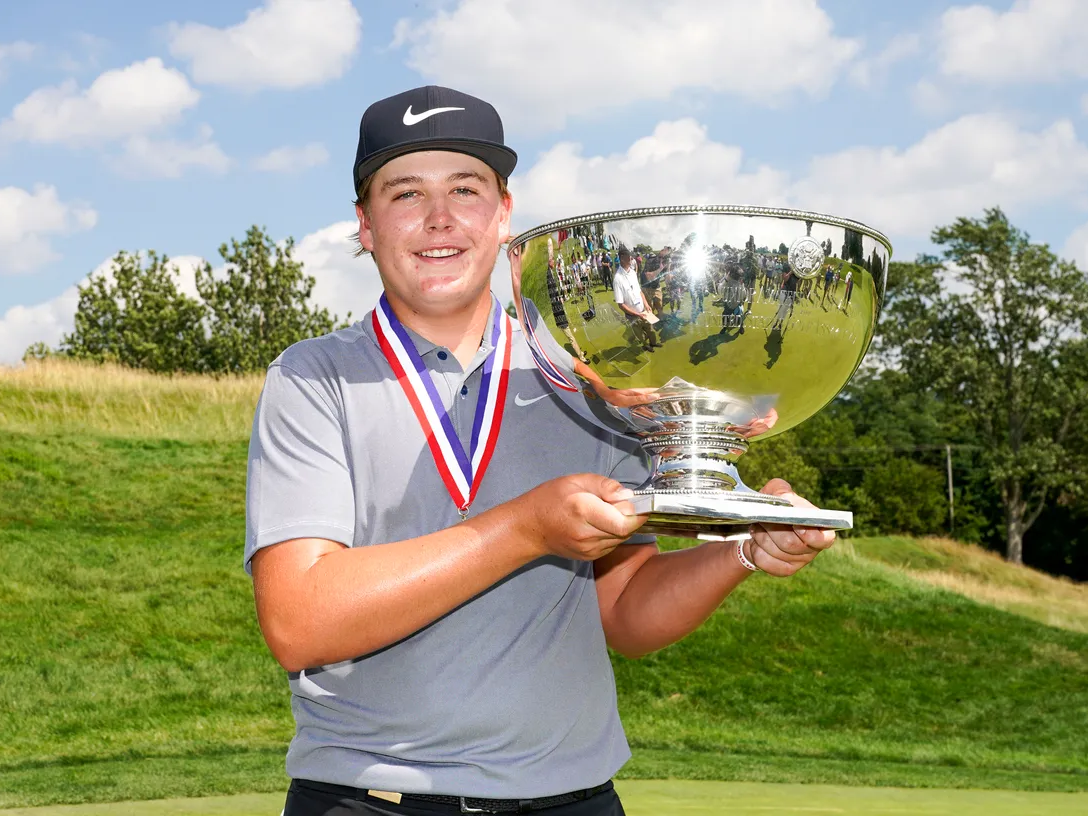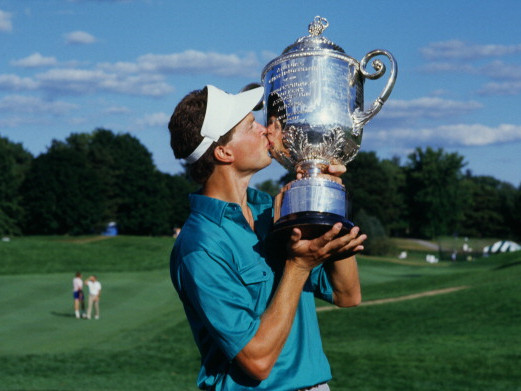1979
U.S. Open Championship
The 1979 Open offered little drama, compared to the three previous U.S. Opens held at Inverness. Each of them had produced great theater, from the Bobby Jones-Harry Vardon pairing in 1920, to the marathon playoff in 1931, to a hodgepodge of circumstances in 1957, that included Ben Hogan’s withdrawal, Jack Nicklaus’s little-noted debut, a violent electrical storm, and a playoff in stifling heat.
Hale Irwin opened with a 74. He limped home in the final round with a double-bogey, bogey finish that capped a final-round 75, holding on to victory by two strokes. No particularly memorable shots, no gut-wrenching collapses, no real drama.
The 1979 U. S. Open, for better or worse, is remembered mostly because of a tree. George and Tom Fazio designed the 528-yard 8th hole to be a classic, three-shot, par-5 hole. The Inverness Burn slices across the fairway beyond the landing area. It has five tough and deep bunkers in the proximity of the green.
Lon Hinkle saw the hole differently. He discovered during practice that nothing prevented a player from hitting a tee shot through a narrow opening onto the adjacent 17th fairway, then lofting a long second shot over trees onto the eighth green, a shortcut that cut about eighty yards off the intended track. After several other players used the same shortcut, the United States Golf Association and the tournament called an emergency meeting, even before the first round had ended. Concern for the safety of the gallery and the golfers playing the 17th, they considered placing substantial bushes into play, blocking any access to the 17th fairway. Or, a tree could be planted overnight to the left of the tee box to plug the existing gap. The latter was the alternative chosen.
Wilber Waters, the fourth of eight superintendents in our Club’s history, was charged with finding, transporting, and transplanting an appropriate tree. Work had been completed by 5:30 a.m., with the planting of a 25-foot Blue Hills spruce which stood looking a bit scraggly and very out of place.
That, however, wasn’t the end for the eighth hole in the tournament’s spotlight. During the third round, Irwin made birdie at that hole. His drive hit a tree and bounced back into the fairway, and his second shot landed in fairly severe rough. Irwin’s third shot was skittering across the green, heading for the gallery and serious trouble, when it clipped the flagstick and stopped some five feet from the cup. He putted-in for birdie. Irwin knew by late afternoon Sunday that the difference between a birdie and bogey at the eighth hole during the third round was the cushion needed for his two-shot victory.














